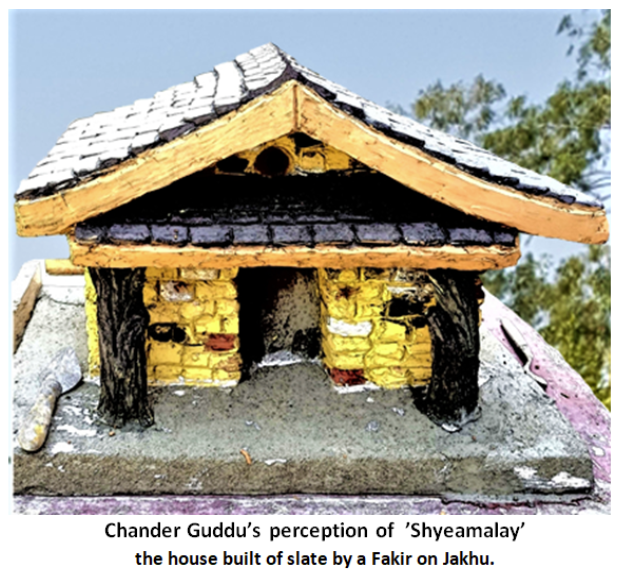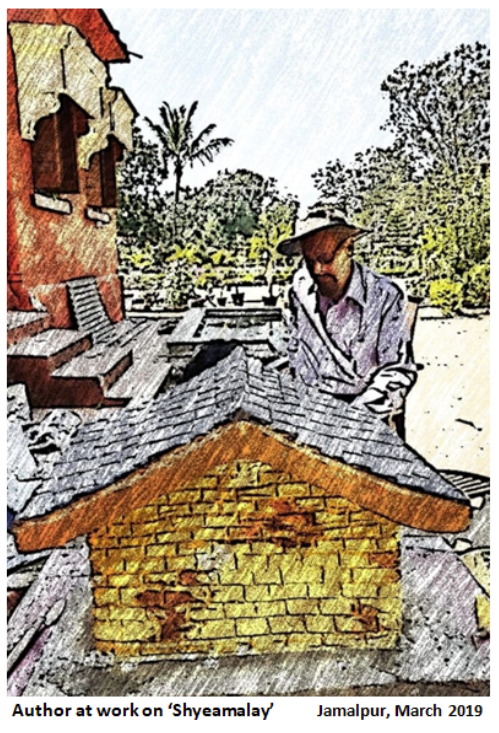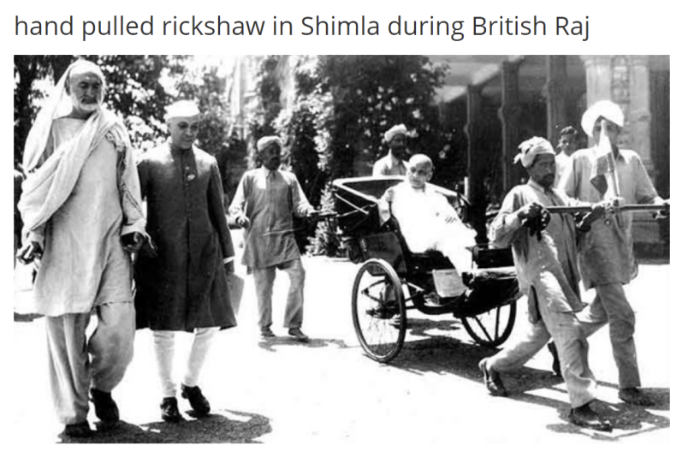- In early days ,the visitor to Simla required Herculean strength to cope with the hardships of uncomfortable , cumbersome and exhausting travel. (The Early Times 1805 -1860)
- “..This day’s journey I shall always remember, for it reminded me of home, the days of my boyhood, my mother, and the happiest of varied recollections. There was, too, an indescribable something in the breeze, which brought back a comparative similarity of feeling. .” wrote a Brit.
- “In hot weather this accent is exceedingly fatiguing, and as there is no stream or boulee between the Nudee and Semla, a Faquir is stationed at the pass to give water to travelers, from whom he receives a small trifle in return…”
- Gerard brothers, two Scotch officers, engaged in the survey of the Sutlej valley, when they encountered the beautiful village of Shumlah described it in their dairy dated 30th August, 1817:-
“This is a resting village for us where a fakir offers water to travelers. ..”
- Place is space that in some way serves the human need. Sense of place , on the other hand, is a social phenomenon.
- From a tiny village whose name is variously reported as Shimlu, Shemalya,Semla, shumla and Shemla, the town went on to officially become the ‘summer capital’ of British India in 1864. England like climate, emerald green grasslands, and snow-covered peaks, all of it attracted the British Empire to transform this very tiny pool of houses into a Mini England. Presently, an Area of Outstanding Natural Beauty (AONB) is an area of countryside in England, Wales or Northern Ireland which has been designated for conservation due to its significant landscape value. Areas are designated in recognition of their national importance.
- According to a Rev. Mr. Long, whom Mr. W. H. Carey mentions in his Simla Guide of 1870, the name came from ‘Shyeamalay ’, ‘dark’ or ‘blue’ abode, a reference to the slate house of the fakir who lived on the hill of Jakho, which looms over the town.
- Enthralled in to realms of imagination and illusions, I wished to sculpt ‘‘Shyeamalay’ the faquir’s hut . A visit to Jamalpur (Munger) to greet my son who had picked up his rank, came as a God given opportunity. With Guddi (Meenakshi), the lady behind it ; and an apt local artisan Ranjan at hand, I worked out the replica of the imagery hut of the legendary faquir , in all my perception.
- Today what we have are the remnants of the British town, existing in the midst of post-independence-era mushrooming of habitats .The British left behind in Shimla some aptly carved hilly Estates and specimens of superb edifices . The British era mansions of Indo – Elizabethan architecture add charm to this biggest hill city in the world. Many a grandeur and dazzle has faded as the sheen and lustre of the buildings has given way to ageing. Even though Shimla’s Sense of Time and Place is liberally illustrated with photographs of old buildings and streets, yet for a lack of contemporary history, opinion is divided even over origin of its name.
‘Mahe ni meriey Shimle the rahen Chamba kitni k door
Shimle ni basna kasauli ni basna, Chamba jaana zaroor..’
is doing vibrant rounds on Whatsapp and social media, over the world with an applaud and a deep sense of nostalgia for those engrossed in the romantic realms of love and passion as also for music lovers alike. The character of a place, its identity, and its people’s sense of rootedness are shaped by interactions within the place and with other places. This duality affects liveability.
- The British empire may have ceased to exist, but it’s echoes linger on in Shimla.
A school of thought speaks about justifying the need to shun British legacies – a sign of slavery and follow the trend of renaming Shimla. It would also ask for change in rhyme and rhythm and lyrics of all those pahadi songs that are resounding on the Shimla Ridge maidan, echoing over the city and through the hills of Himachal.
- It is no wonder why Rome is one of the most romantic cities in the world, as it is brimming with old-world charm. … Paris is called the “City of Love” for its sights and its popularity as a honeymoon destination . Shimla is a city of passionate love and romance.
I have fond memories of the youthful days and our honeymooning with my beloved bride Vishav Kirti in hotel Fountain Blue.
- It is a feeling held by people (not by the place itself). Places with a strong “sense of place” have a strong identity that is deeply felt by inhabitants and visitors. It is blending of the physical characteristics of the land with memory, art, story, and the inexplicable feel that places leave on the psyche and mind.
My son Manu Maharaaj was asked in an interview ‘What is famous about Shimla ?’ ‘Shimla mirich’ was his spontaneous reply. God has bestowed up on him success in life.
- A sense of place is an amalgamation of– visual, cultural, social, and environmental perceptions – that provide meaning to a location. Through time; shared experiences, stories, and history, help connecting place and people and to transmit feelings of place from generation to generation.
- I am incidentally reminded of having read in the book ‘My Land My People’ by H H Dalai Lama about the 1913, Conference at Simla (now Shimla), in India , when Chinese, Tibetans the British initialed a draft convention; wherein ‘Britain and China were to respect the territorial integrity of Tibet, not to send troops into Tibet, and not to interfere with the administration of the Tibetan government.’
- Place is more than just a location on a map. In addition, places evolve over time, so connections across time are also important. Changing the name of Shimla would be a futile effort to distort all that history.
- Place-names speak of the geographical and cultural environment. They tell the cultural values of significance to people’s sense of feeling at home.
A place is distinguished by its people, markets, governments, and institutions, transport as much as it is by its landscape and scenery (including streets and roads), buildings, and boundaries.
I can not forget the blissful evenings at Davicos*, in the cheerful company of my nieces Madhu and Manju, asking farmaish of ‘Come September’ tune, with live band in attendance, doling out drinks to the band masters till the last call of the bar. Loading my tipsy friend Hazrat, out on a hand pulled rickshaw ; back our home in Dogra Lodge, was a startling experience.
- The phrase sense of place is often used to refer to the quality that makes somewhere distinctive. There’s no language-independent dictionary for names.”A rose by any other name would smell as sweet” is a popular reference to William Shakespeare’s play Romeo and Juliet.
…………………………………………………………………………………………………………………………………………………..
*(Unfortunately burnt out in fire)
With inputs from Dr. Ravinder Kumar Dhiman, President, SHIMLA BICENTINAL GROUP
Prof. (Er.) Chander P Mahajan is an art critic & a free lance journalist. The Environmentalist stays in Shimla and Dalhousie, Himachal Pradesh, India.






